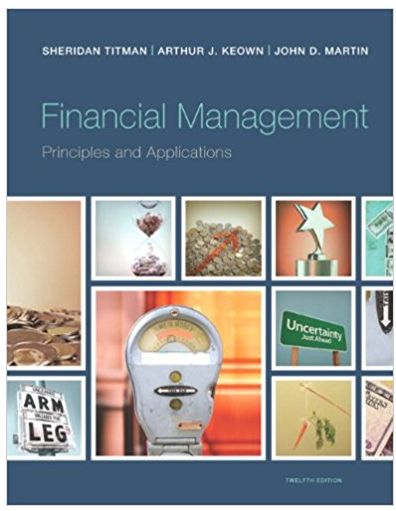Question
Assume that you manage a risky portfolio with an expected rate of return of 18% and a standard deviation of 28%. The T-bill rate (risk-free
Assume that you manage a risky portfolio with an expected rate of
return of 18% and a standard deviation of 28%. The T-bill rate (risk-free rate) is 7%. Your
client chooses to invest 70% in the risky portfolio in your fund and 30% in a T-bill money
market fund. We assume that investors use mean-variance utility: U = E(r)
0.5 A2,
where E(r) is the expected return, A is the risk aversion coeffiffifficient and 2 is the variance of
returns.
a) What is the expected value and standard deviation of the rate of return on your client's
portfolio? [4 marks]
b) What is the reward-to-volatility ratio (Sharpe ratio) of your risky portfolio? What is
the reward-to-volatility ratio (Sharpe ratio) of your client's risky portfolio? Comment
on the relationship between these two Sharpe ratio calculated and explain the intuition
behind. [8 marks]
c) Draw the Capital Allocation Line (CAL) of your portfolio on an expected return
standard deviation diagram. What is the slope of the CAL? Show the position of
your client on your fund's CAL. [6 marks]
d) Suppose that your client decides to invest in your portfolio a proportion y of the total
investment budget so that the overall portfolio will have an expected rate of return of
16%.
(i) What is the proportion y? [2 marks]
(ii) What is the standard deviation of the rate of return on your client's portfolio?
Step by Step Solution
There are 3 Steps involved in it
Step: 1

Get Instant Access to Expert-Tailored Solutions
See step-by-step solutions with expert insights and AI powered tools for academic success
Step: 2

Step: 3

Ace Your Homework with AI
Get the answers you need in no time with our AI-driven, step-by-step assistance
Get Started


